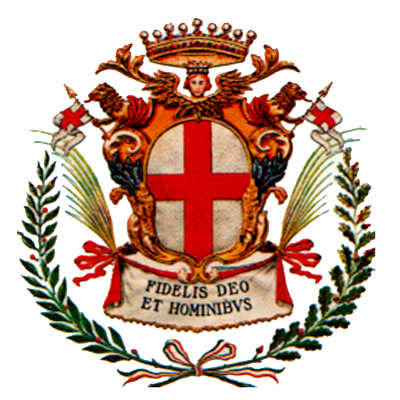THE MARKET HALL
In nineteenth-century Piedmont, which had an economy based largely on agriculture, the construction of market halls - called "ali" here - was common in the main towns. Important market halls were built in Novara, Asti, Vercelli, Alessandria, Carmagnola, Cuneo, Racconigi, Saluzzo, Bra, Alba and, naturally, Savigliano. The construction systems employed traditional technologies (brick, stone and wood) as well as new ones (cast iron and/or steel) for the supporting structures.
On 25 June 1854 the Savigliano Municipal Council's agenda included a discussion of whether a market hall should be built for the benefit of local commerce. The commission responsible for overseeing construction of the public building had to choose the best location for the structure and submit a project describing its constructional characteristics. It presented its report during the council meeting of 13 November 1854 and the first site that was proposed corresponded to the building owned by the Regio Ospizio di Carità, a charitable institution west of Piazza Nuova.
Based on the construction plans drawn up by the surveyor Giovenale Trossarelli, the canopy was to cover eight enormous warehouses at the two ends, one of which would house the public weigh station and another the municipal customs house. The six remaining warehouses were allocated to commercial activities.
On 23 May 1856 a tender was announced for the assignment of the work, based on the survey and specifications drawn up by Trossarelli and dated 28 January 1856. The structure took a year to build and the local market of silk cocoons was also installed there. It was subsequently used as a warehouse for cattle and forage, deposit and city weigh station.
The building, nearly 53 metres long, 25.5 wide and 13 tall, bears fascinating witness to the architectural tastes of the era for the commercial constructions. The bearing structure is composed of brick pillars supporting a roof of bent terracotta roof tiles and stone slabs with a wooden support structure (the four trusses of the internal bay are impressive). On the outside, the building presents fair-face brickwork cadenced by a sequence of simple arches, some open and some blind.
The four main entrances are surmounted by triangular gables and, with the exception of the façade on the square, which has a clock and a bell, they are decorated with crossed coats of arms.
In the 1960s the possibility of demolishing the structure was discussed and design competitions were held to come up with ideas for possible ways to reuse the structure or the space it occupies. Following extraordinary maintenance work for the reuse of the building, since 1998 the "Ala" has been renovated and turned into a multipurpose structure for cultural and recreational activities, and as the headquarters of the Events Committee.

